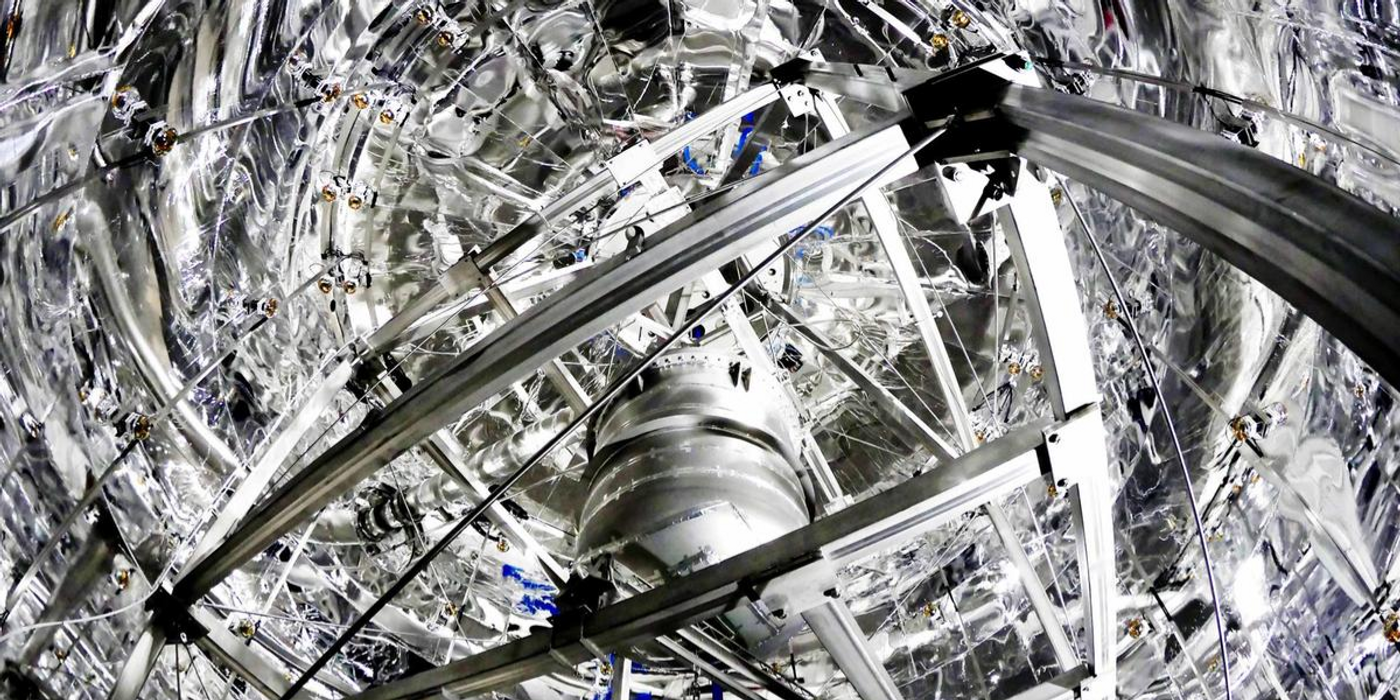The Accidental Discovery of An Exotic Nuclear Decay

The XENON collaboration is formed by an international group of astrophysicists, whose interest is to search for "dark matter", an elusive entity that supposedly provides our universe massive gravitational pull so it won't expand out of control. In their underground research facility in central Italy, the researchers accidentally observed a rare radioactive decay process that would have otherwise gone unnoticed for many years to come, all thanks to their dark matter detector that's filled with 3,500 kg (7,716 lb) of liquid xenon.
Xenon-124, an isotope whose nucleus is made up of 54 protons and 70 neutrons, has always been considered a stable form of the element. The consistent detection of an unknown source of X-rays and Auger electrons at the XENON facility caught the researchers' attention. With over one year of direct repeated measurement, they successfully confirmed that the xenon in their detector undergoes a rare form of radioactive decay, known as two-neutrino double electron capture.
Electron capture is a common form of beta decay, which involves the nucleus of an atom snatching an electron from its own "orbit" and brings it inside. Once the electron came into contact with a proton, the two forms a neutron, a subatomic particle weighed the same as a proton but have no charge. At the same time, a neutrino is sent out of the nucleus.
Two-neutrino double electron capture is similar to what mentioned above but simultaneously happens to two electron-proton pairs within the same atom. After having two of its protons converted, a decayed xenon-124 atom turns into tellurium-124, an isotope with exact same atomic weight but less +2 charge in its nucleus. The half-life of xenon-124 was estimated as long as 1.8 × 10^22 years. That's whopping one trillion times the age of our universe.
Just when you think that the decay of xenon-124 takes a really long time, it is not the isotope with the longest half-life. The champion is tellurium-128, whose half-life is over 160 trillion times greater than the age of the universe, at 2.2 x 10^24 years.
What's more intriguing, tellurium-128 undergoes double beta decay, a process that turns two neutrons into two protons and releases two electrons. It's comparable to the decay of xenon-124 in the sense that both lose a pair of electrons. But in tellurium-128's case, the electrons travel in a reversed direction.
The surprising discovery of double electron capture would help scientists test various nuclear models and allow them to carry out a more accurate prediction about the values of the nuclear matrix elements, a quantity that plays an indispensable role in nuclear physics.
This research was recently published in the journal Nature.
While Looking for Dark Matter, Scientists Discover Something Way Cooler (Anton Petrov)
Source: Nature








